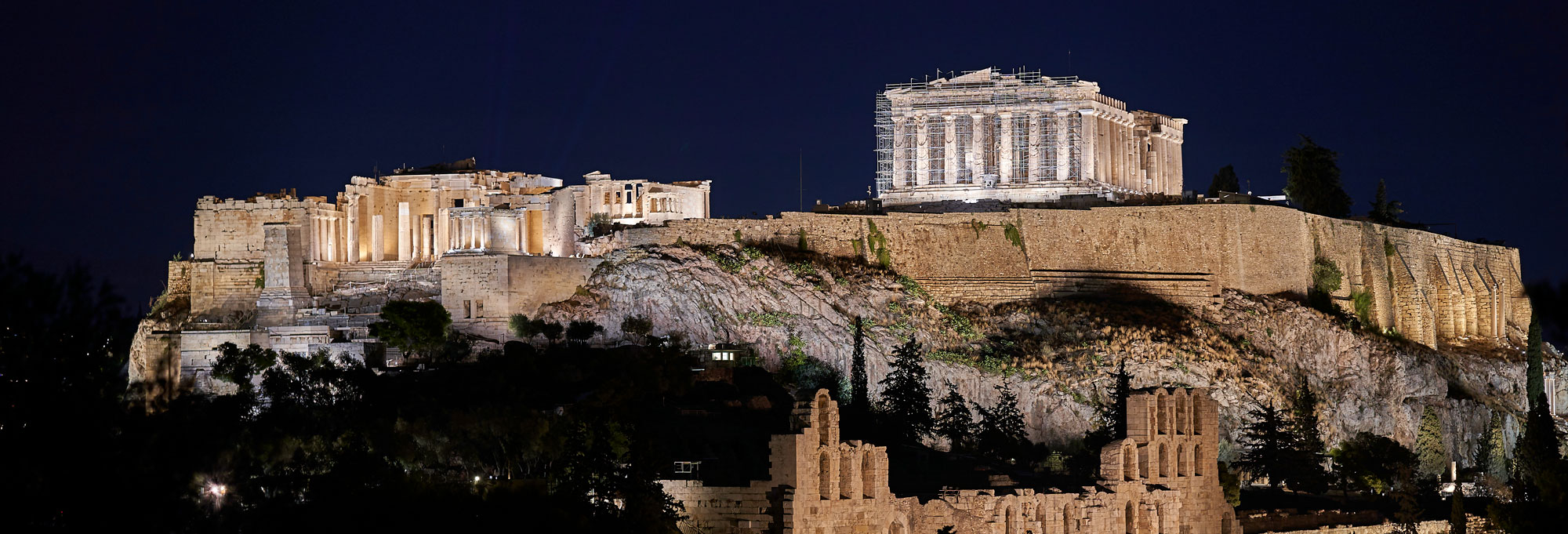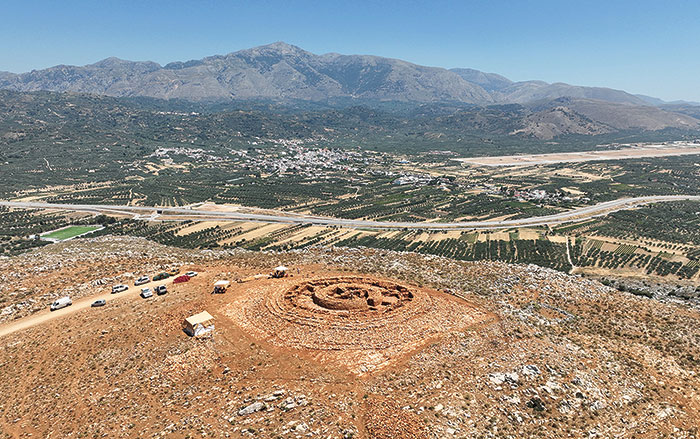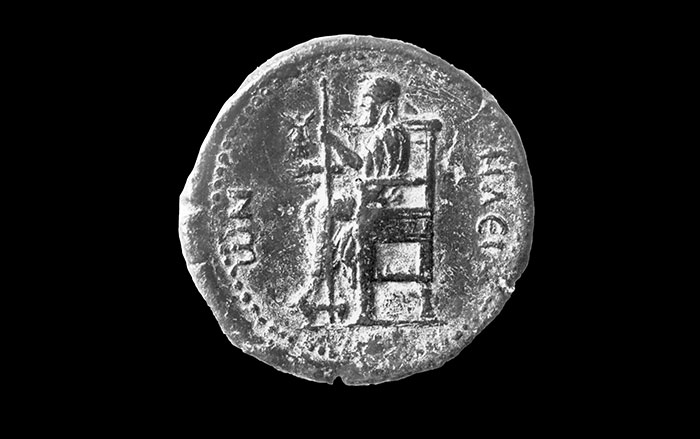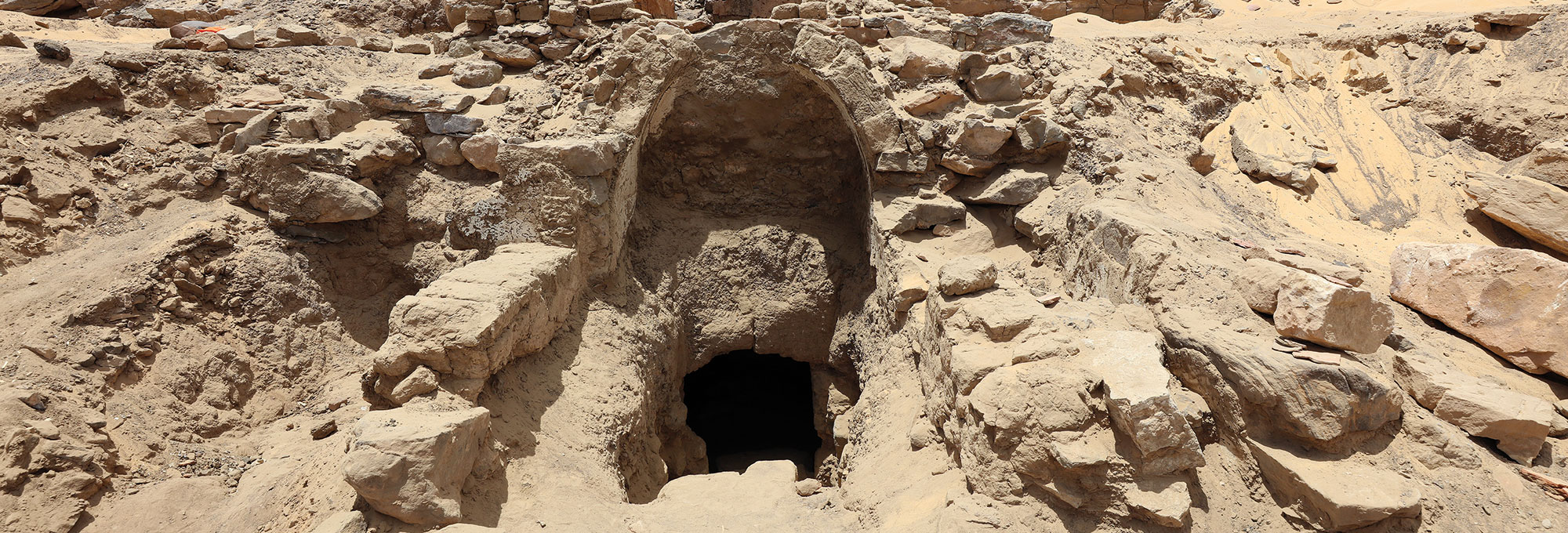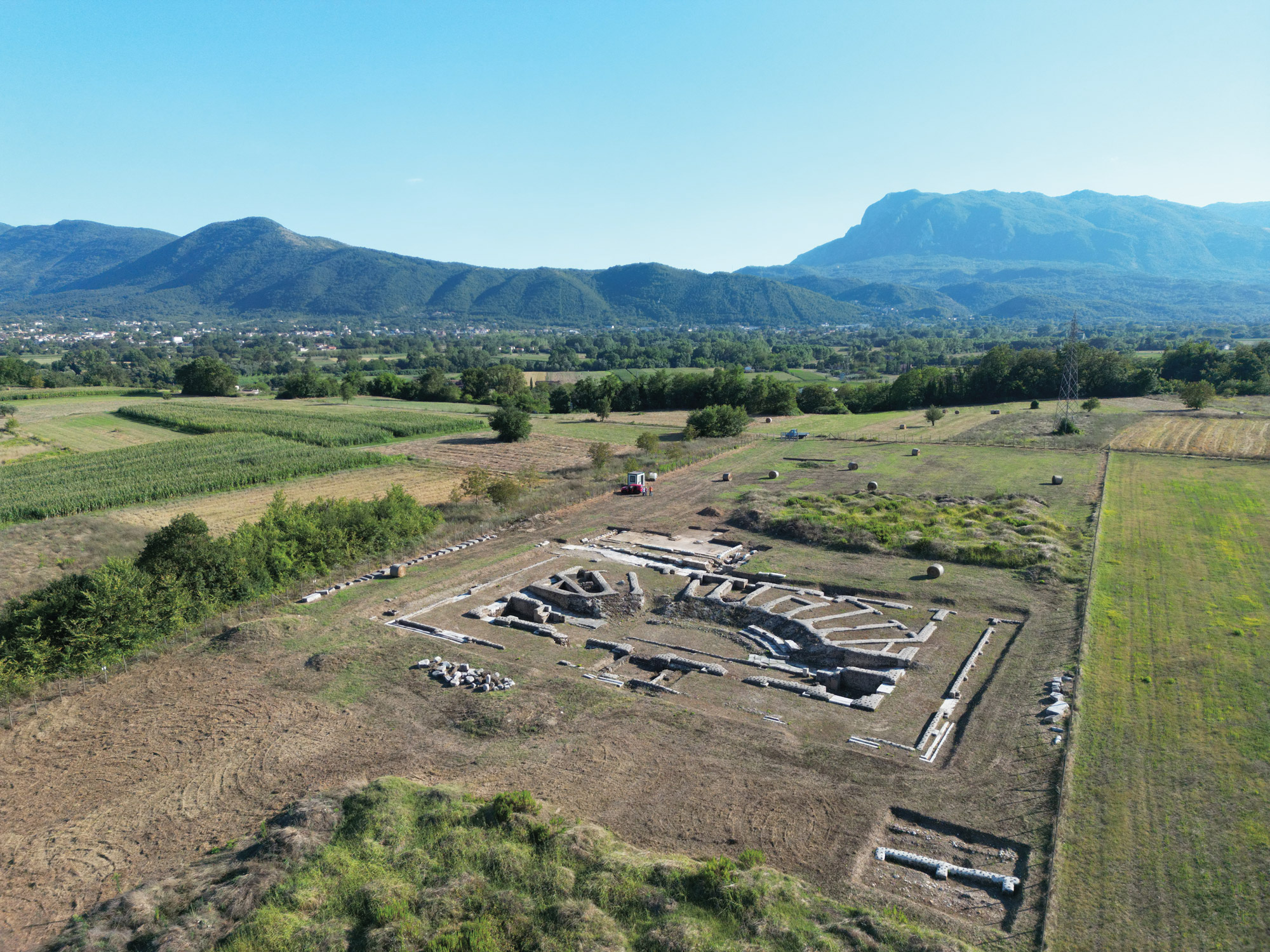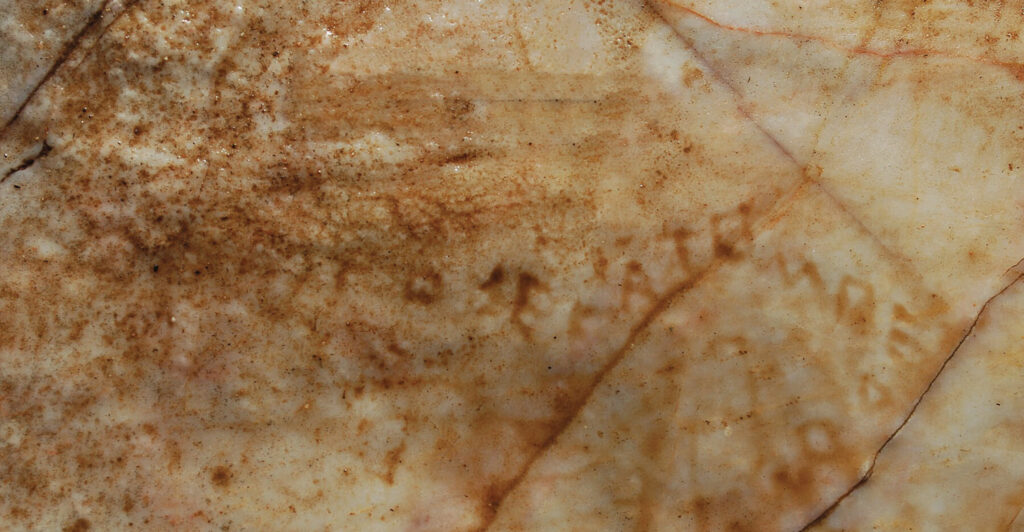
Graffiti etched into a rock outcropping millennia ago by a shepherd named Mikon may be a crucial piece of evidence confirming the nature of a hotly debated ancient structure on the Athenian Acropolis. Although the Acropolis is one of the world’s best-known archaeological sites, there is still much to be learned about the structures that stood atop it prior to the ambitious construction program that included the Parthenon and other renowned buildings around 450 b.c. Archaeologists have found inscriptions that mention older temples, and even some sculptures that once adorned them, but it has been difficult to understand the Acropolis’ early topography.

One particularly controversial edifice is the Hekatompedon, or “100-foot-long building,” a term later used to refer to the Parthenon. Scholars argue over whether an earlier building with this same name existed. A decree inscribed on marble and dating to around 485 b.c. mentions a Hekatompedon on the Acropolis with rooms for storing treasure. “Scholars disagree on what kind of building it was and where on the Acropolis it stood,” says archaeologist Janric van Rookhuijzen of Radboud University. “One theory holds there couldn’t have been a big temple standing on the site and that the Hekatompedon mentioned was merely a courtyard, perhaps with some small treasuries.”
On Barako Hill near the town of Vari, 12 miles south of Athens, van Rookhuijzen and University of Tennessee, Knoxville, classicist Merle Langdon identified a new carving among 2,000 other figures created by shepherds like Mikon around 2,500 years ago. Dating to the late sixth century b.c., this carving depicts a large colonnaded building accompanied by the phrase “the Hekatompedon of [or by] Mikon.” Since the graffito dates to at least 50 years before the construction of the Parthenon, it seems to confirm that an earlier temple called the Hekatompedon did, indeed, stand on the Acropolis, and that it was visible to Mikon on his daily wanderings.


